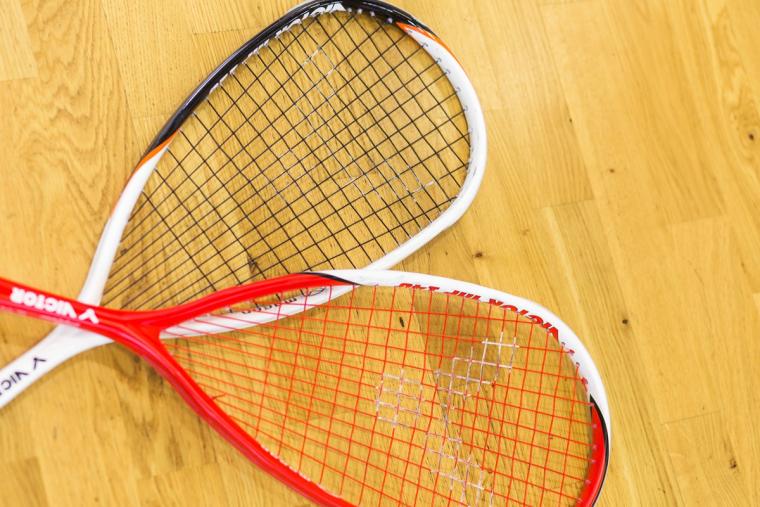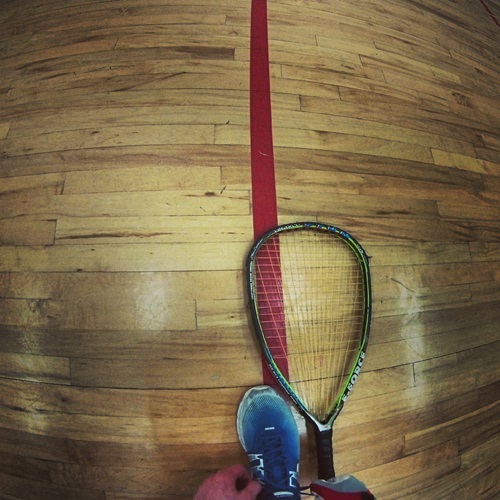
Back in the 1970s and ’80s, racquetball was immensely popular and was billed as America’s fastest-growing sport. Racquetball courts became commonplace in sports clubs and at school athletic facilities, and the game’s international popularity also blossomed thanks to its fast pace and high intensity.
The first racquetball world championship was held in 1981, and the Olympic Committee took notice of racquetball and classified it as a “developing” Olympic sport. However, it never achieved the popularity required to become an Olympic event.
During its heyday in 1980, racquetball boasted about 12 million players but by 2017, U.S. participation had plummeted to an estimated 3.5 million. From 2018 through 2023, racquetball participation remained flat at about 3.5 million, according to the SFIA 2024 Topline Participation Report. The research also revealed that in the one-year period from 2022 to 2023, casual racquetball participation inched up 4.3 percent (2.964 million players) while core participation dropped 8.9 percent (855 players).
In contrast, pickleball has almost completely supplanted racquetball and continues its stratospheric growth. SFIA reports that pickleball participation totaled 13.6 million participants in 2023—a 51.8 percent one-year growth rate. Pickleball has grown 223.5 percent since 2020. For comparison purposes, pickleball is now nearly the size of outdoor soccer (14.1 million participants).
As SportRx explained, by the ’90s, the initial excitement had worn off and racquetball saw a decline. The fall was due to multiple causes. The advances in racquets and balls made it harder for the average viewer to follow the ball, so televised matches were unusual. The increased pace made it likewise a more intimidating sport for beginners. Fewer people played and talked about it, so gyms and sports clubs began converting their racquetball courts for other activities.
Likewise, thepickler.com opined that racquetball’s precipitous decline can be blamed on three key factors. First, there was increased competition from other racquet sports, as well as other fitness crazes that offered club and gym owners higher profit margins per square foot. Second, racquetball equipment technology changed the game by leading to faster racquets, balls and games.
The result was short rallies and the intimidation of newcomers due to the increased pace. Finally, the high speed of the sport made it incredibly difficult for the average viewer to see and follow the ball on a screen, so racquetball was never able to grow through mass media. Ultimately, fewer people talked about it, played it or invested in it.
Writing for Forbes.com, Todd Boss pointed out, “Racquetball’s big problem is that the court access is mostly dependent on private businesses building indoor courts in expensive per-square-foot locations. These courts are either owned by small businesses (many of which were bankrupted by COVID) or with large chains who are in many cases deprioritizing the sport in favor of higher-density usage of the space.”
Boss added, “Racquetball courts remain in places like universities and in smaller numbers with existing chains, but they’re more of a novelty instead of a revenue driver, and there aren’t enough courts to build large-scale programming. The one thing all of these racquetball courts have in common are membership requirements. You cannot generally just walk into any of these places and play; you have to either pay a monthly membership fee or be a student at a school with the courts already built.”
The sentiment is echoed by a contributor to Quora who commented, “Both tennis and racquetball are having their aging players poached by the latest craze in racquet sports, pickleball. Pickleball has less movement, a smaller court, less violent ball contact and is much easier on aging bodies than either racquetball or tennis. Racquetball requires a dedicated indoor court, it gets virtually NO media coverage, and in my opinion, requires a higher level of athleticism for its entry-level players because of its speed and complex geometry. I'd compare it to the demise of jai alai in some ways. If you don't know what that is, I rest my case.”

As if racquetball doesn’t have enough problems, squash is also trying to eat racquetball’s lunch. In January 2024, Squash Mad reported that US Squash CEO Kevin Klipstein vowed to “quickly and aggressively” cannibalize America’s racquetball courts in order to grow participation in squash.
Using pickleball’s current threat to tennis as an example, Klipstein served a warning to racquetball of his intention to mount a similar takeover of an existing player base and court inventory. Klipstein stated, “Racquetball once did the same thing to handball, and now squash to racquetball. 14,000 racquetball courts (down from a peak of more than 30,000) are quickly disappearing or being repurposed.”
Certainly, every sport experiences a growth and decline lifecycle. As racquetball continues to fade, its long-term prognosis is not bright, but at this point there are still enough enthusiasts to keep it alive.
“I know based on my over 10 years of continuous work and the recent conversations I've had with facilitators and those involved with marketing and retail, that people will continue to buy racquetball racquets regularly,” states Restrungmagazine.com writer Freddy Ramirez. “As with anything else marketable, you have highs and lows. Racquetball will never be what we were conned into thinking it could be for us. And I'm okay with that. But I know racquetball will always be something that brings people together. It's all in the how and why that we can all move forward with great enthusiasm.”

